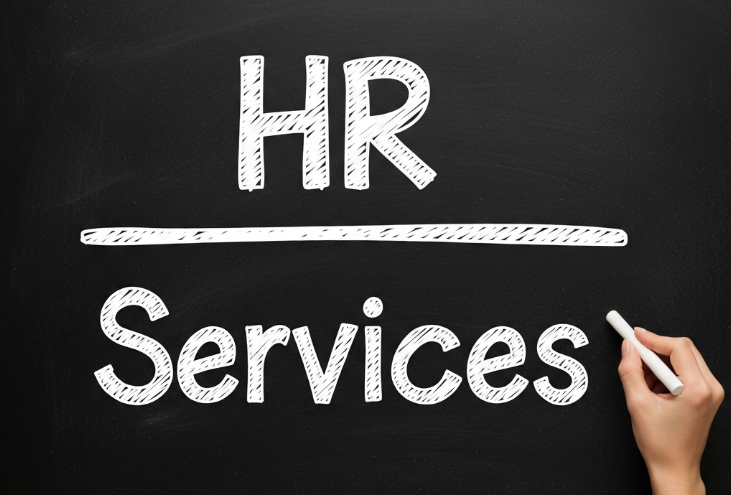What’s an Acceptable or Not Acceptable Use of AI for Employees?
Does your company have an AI policy? Its something most companies have at least considered recently. Considering AI ethics considerations and potential repercussions if your employees use AI erroneously, it could create potential liability issues.
With AI use still in its infancy and most companies still finding their footing in relation to how to use these tools, it’s important to define what is acceptable and not acceptable use of AI for employees.
In this blog:
- Can ChatGPT be used for work?
- Where’s the limit?
- Should companies put an AI policy in place?
- What is an AI governance policy?
- What should be in an AI policy?
- How to put an AI policy in place?
Can ChatGPT be used for work?
It’s generally acceptable to use ChatGPT and other AI tools such as Google Gemini, Perplexity, Co-Pilot, and Claude at work to boost productivity. These tools can be used for many types of tasks such as to draft emails, summarize content, data analysis, research, speed up menial tasks, or to generate ideas.
However, its important to always be conscious about the accuracy of outputs, data privacy, intellectual privacy, and becoming too reliant on these tools. Human oversight is a must.
Check your company’s AI policy before using any AI tools. Treat AI as an assistant to enhance your work and improve efficiency. If you use AI you’re still accountable for the accuracy and quality of anything you submit.
Should companies put an AI policy in place?
Yes. We are now at a point where AI is widely accessible and used by companies across Canada. It’s a best practice for employers to have a well defined internal AI policy that outlined when and how employees are to use AI tools.
Employers should implement an AI use policy to mitigate risk and liabilitiy. It can help manage risks such as:
- Data breaches
- Legal compliance
- Regulatory compliance
- Ethical use
- Permissions (Who can access what tools)
- Innovative uses
What is an AI governance policy?
An AI governance policy is a formal set of guidelines, principles, and procedures that an organization creates to ensure the responsible, ethical, and compliant use of artificial intelligence (AI). It outlines how AI tools are chosen, used, and managed.
The main objective of an AI policy is to protect the organization, its employees, customers, and data. AI policies help to ensure everyone properly uses these tools, prevents misuse, and reduces liability risks.
What should be in an AI policy?
A thorough AI policy should outline all facets of usage for your organization. It should explain the purpose of the guidelines, what is deemed acceptable use, data usage, accuracy and accountability, compliance, ethical use, and tool management.
Here is a list of the key components that should be included in an AI governance policy:
- Purpose and Scope: This explains why the policy exists. It can define uses for specific employee groups or types of AI tools.
- Acceptable Use Guidelines: Defines how employees can use AI tools (e.g., content creation, automation, decision-making, task management, integration with other tools).
- Data Privacy and Security: Outlines what types of data can or cannot be entered into AI systems to protect confidential or personal information.
- Accuracy and Accountability: Ensures that human oversight is always applied and that final responsibility for AI-generated work lies with employees.
- Ethical Standards: Promotes fairness, transparency, and the avoidance of bias or discrimination in AI-driven decisions.
- Compliance and Legal: Aligns AI usage with privacy laws, intellectual property rules, and emerging AI regulations.
- Monitoring and Review: Sets procedures for regularly reviewing AI tools, updating the policy, and managing risks.
How to put an AI policy in place?
Most AI policies will cover similar content, but it's important to craft a document that is specific to your organizational needs.
Create a clear framework that guides how artificial intelligence tools are used responsibly and effectively within your organization. Here’s a step-by-step guide to implementing an AI policy:
1. Define the Purpose and Goals
Identify why your organization needs an AI policy. Is it to improve efficiency? To protect sensitive data? To ensure compliance with privacy laws? Or to just set expectations for employees. Clearly outline your objectives so the policy aligns with your company’s overall values and strategy.
2. Form an AI Governance Team
Create a team that includes members from departments across your organization. This team will own the policy, oversee implementation, and make updates as AI use evolves. Be sure to include:
IT and cybersecurity: to assess technical risks and data protection.
Legal: to ensure adherence to laws and regulations.
HR and communications: to manage employee guidance and training.
Leadership: to set accountability and approve the framework.
3. Identify AI Use Cases
Take stock of how AI is currently used (or may be used) across departments. For example, will it be used mainly for writing and communications? Will tools be used for Data analysis or automation? Or will it be used for recruitment, marketing, or customer service AI platforms. This helps you focus the policy to meet real-world needs.
4. Set Clear Usage Guidelines
Outline what is and is not allowed. Be specific with what are considered acceptable uses of AI. Outline what is not allowed and ensure there is a clause about human review before publication of information.
5. Address Data Privacy and Security
Establish strict rules for handling data used in or produced by AI tools. Ensure compliance with data protection laws (e.g., PIPEDA). Restrict the sharing of personal or proprietary information with external AI platforms.
6. Ensure Human Oversight and Accountability
Make it clear that humans remain responsible for all final outputs, decisions, and actions. AI should assist, not replace, critical thinking, ethical judgment, or managerial approval.
7. Provide Employee Training
Educate staff on how to use AI tools effectively and responsibly, risks and limitations, and who to contact with questions or concerns. Training helps ensure consistent and ethical use across the organization.
8. Review and Update Regularly
AI technology evolves quickly. Schedule periodic reviews to update the policy, evaluate risks, and ensure it remains relevant.
A final word on acceptable AI use for employees
AI continues to reshape the workplace, and having a clear and comprehensive AI policy is no longer optional. Establishing formal guidelines helps organizations balance innovation with responsibility, ensuring employees use AI tools safely, ethically, and effectively. A well-crafted AI governance policy not only protects your business from legal and security risks but also promotes trust, transparency, and accountability.
Reach out to AugmentHR if you need assistance creating an AI policy for your organization. Our
HR service team can help you create a custom policy specifically designed for how your employees use AI.
Renza Vissa is an experienced Human Resources professional with over 20 years of experience leading HR initiatives to improve organizational structures, elevate talent management and development, implement effective performance management programs, and develop and facilitate training programs (competencies, compliance), career coaching initiatives and harassment investigations.












